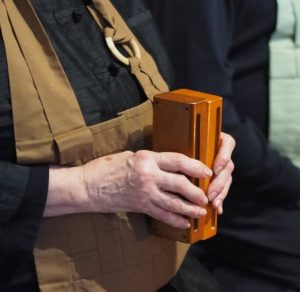When we sit down on a cushion in silence with ourselves we sit in the ebb and flow of self wholeheartedly with whatever the kaleidoscope of reality presents: the sound of a bird, the squad car’s siren; feelings of shame and pride; chaotic mind, peaceful mind. Though some of these things may be harder for us to acknowledge and stay with than others, actually each is just what it is arising and falling away moment to moment, breath by breath. We do not attempt to get rid of any of these experiences or to create special states of mind. Just to be with what is, is our practice.
Through the process of letting it all in, of accepting the things we judge as good or bad, the simple and profound practice of zazen becomes the heart of our practice, the heart of how we open in compassion to our experience and to others.
Intelligent Practice always deals with just one thing: the fear at the base of human existence, the fear that I am not. And of course I am not, but the last thing I want to know is that. I am impermanence itself in a rapidly changing human form that appears solid. I fear to see what I am: an ever-changing energy field. I don’t want to be that. So good practice is about fear. Fear takes the form of constantly thinking, speculating, analyzing, fantasizing. With all that activity we create a cloud to keep ourselves safe in make-believe practice.
True practice is not safe; it’s anything but safe. But we don’t like that, so we obsess with our feverish efforts to achieve our version of the personal dream. Such obsessive practice is itself just another cloud between ourselves and reality. The only thing that matters is seeing with an impersonal spotlight: seeing things as they really are. When the personal barrier drops away, why do we have to call it anything? We just live our lives. And when we die, we just die. No problem anywhere.
—Charlotte Beck, Everyday Zen, “Love & Work”
